RBS 2010 Annual Report Download - page 323
Download and view the complete annual report
Please find page 323 of the 2010 RBS annual report below. You can navigate through the pages in the report by either clicking on the pages listed below, or by using the keyword search tool below to find specific information within the annual report.-
 1
1 -
 2
2 -
 3
3 -
 4
4 -
 5
5 -
 6
6 -
 7
7 -
 8
8 -
 9
9 -
 10
10 -
 11
11 -
 12
12 -
 13
13 -
 14
14 -
 15
15 -
 16
16 -
 17
17 -
 18
18 -
 19
19 -
 20
20 -
 21
21 -
 22
22 -
 23
23 -
 24
24 -
 25
25 -
 26
26 -
 27
27 -
 28
28 -
 29
29 -
 30
30 -
 31
31 -
 32
32 -
 33
33 -
 34
34 -
 35
35 -
 36
36 -
 37
37 -
 38
38 -
 39
39 -
 40
40 -
 41
41 -
 42
42 -
 43
43 -
 44
44 -
 45
45 -
 46
46 -
 47
47 -
 48
48 -
 49
49 -
 50
50 -
 51
51 -
 52
52 -
 53
53 -
 54
54 -
 55
55 -
 56
56 -
 57
57 -
 58
58 -
 59
59 -
 60
60 -
 61
61 -
 62
62 -
 63
63 -
 64
64 -
 65
65 -
 66
66 -
 67
67 -
 68
68 -
 69
69 -
 70
70 -
 71
71 -
 72
72 -
 73
73 -
 74
74 -
 75
75 -
 76
76 -
 77
77 -
 78
78 -
 79
79 -
 80
80 -
 81
81 -
 82
82 -
 83
83 -
 84
84 -
 85
85 -
 86
86 -
 87
87 -
 88
88 -
 89
89 -
 90
90 -
 91
91 -
 92
92 -
 93
93 -
 94
94 -
 95
95 -
 96
96 -
 97
97 -
 98
98 -
 99
99 -
 100
100 -
 101
101 -
 102
102 -
 103
103 -
 104
104 -
 105
105 -
 106
106 -
 107
107 -
 108
108 -
 109
109 -
 110
110 -
 111
111 -
 112
112 -
 113
113 -
 114
114 -
 115
115 -
 116
116 -
 117
117 -
 118
118 -
 119
119 -
 120
120 -
 121
121 -
 122
122 -
 123
123 -
 124
124 -
 125
125 -
 126
126 -
 127
127 -
 128
128 -
 129
129 -
 130
130 -
 131
131 -
 132
132 -
 133
133 -
 134
134 -
 135
135 -
 136
136 -
 137
137 -
 138
138 -
 139
139 -
 140
140 -
 141
141 -
 142
142 -
 143
143 -
 144
144 -
 145
145 -
 146
146 -
 147
147 -
 148
148 -
 149
149 -
 150
150 -
 151
151 -
 152
152 -
 153
153 -
 154
154 -
 155
155 -
 156
156 -
 157
157 -
 158
158 -
 159
159 -
 160
160 -
 161
161 -
 162
162 -
 163
163 -
 164
164 -
 165
165 -
 166
166 -
 167
167 -
 168
168 -
 169
169 -
 170
170 -
 171
171 -
 172
172 -
 173
173 -
 174
174 -
 175
175 -
 176
176 -
 177
177 -
 178
178 -
 179
179 -
 180
180 -
 181
181 -
 182
182 -
 183
183 -
 184
184 -
 185
185 -
 186
186 -
 187
187 -
 188
188 -
 189
189 -
 190
190 -
 191
191 -
 192
192 -
 193
193 -
 194
194 -
 195
195 -
 196
196 -
 197
197 -
 198
198 -
 199
199 -
 200
200 -
 201
201 -
 202
202 -
 203
203 -
 204
204 -
 205
205 -
 206
206 -
 207
207 -
 208
208 -
 209
209 -
 210
210 -
 211
211 -
 212
212 -
 213
213 -
 214
214 -
 215
215 -
 216
216 -
 217
217 -
 218
218 -
 219
219 -
 220
220 -
 221
221 -
 222
222 -
 223
223 -
 224
224 -
 225
225 -
 226
226 -
 227
227 -
 228
228 -
 229
229 -
 230
230 -
 231
231 -
 232
232 -
 233
233 -
 234
234 -
 235
235 -
 236
236 -
 237
237 -
 238
238 -
 239
239 -
 240
240 -
 241
241 -
 242
242 -
 243
243 -
 244
244 -
 245
245 -
 246
246 -
 247
247 -
 248
248 -
 249
249 -
 250
250 -
 251
251 -
 252
252 -
 253
253 -
 254
254 -
 255
255 -
 256
256 -
 257
257 -
 258
258 -
 259
259 -
 260
260 -
 261
261 -
 262
262 -
 263
263 -
 264
264 -
 265
265 -
 266
266 -
 267
267 -
 268
268 -
 269
269 -
 270
270 -
 271
271 -
 272
272 -
 273
273 -
 274
274 -
 275
275 -
 276
276 -
 277
277 -
 278
278 -
 279
279 -
 280
280 -
 281
281 -
 282
282 -
 283
283 -
 284
284 -
 285
285 -
 286
286 -
 287
287 -
 288
288 -
 289
289 -
 290
290 -
 291
291 -
 292
292 -
 293
293 -
 294
294 -
 295
295 -
 296
296 -
 297
297 -
 298
298 -
 299
299 -
 300
300 -
 301
301 -
 302
302 -
 303
303 -
 304
304 -
 305
305 -
 306
306 -
 307
307 -
 308
308 -
 309
309 -
 310
310 -
 311
311 -
 312
312 -
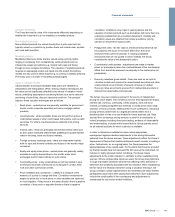 313
313 -
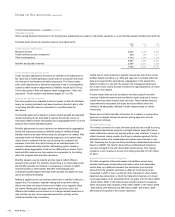 314
314 -
 315
315 -
 316
316 -
 317
317 -
 318
318 -
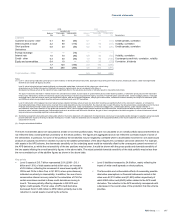 319
319 -
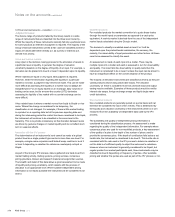 320
320 -
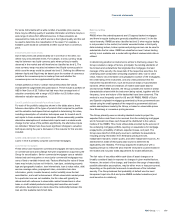 321
321 -
 322
322 -
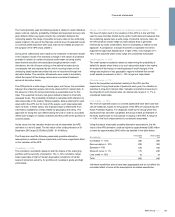 323
323 -
 324
324 -
 325
325 -
 326
326 -
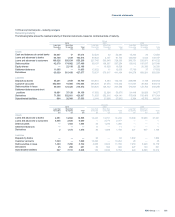 327
327 -
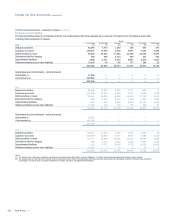 328
328 -
 329
329 -
 330
330 -
 331
331 -
 332
332 -
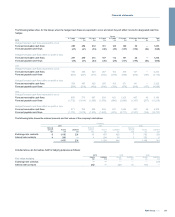 333
333 -
 334
334 -
 335
335 -
 336
336 -
 337
337 -
 338
338 -
 339
339 -
 340
340 -
 341
341 -
 342
342 -
 343
343 -
 344
344 -
 345
345 -
 346
346 -
 347
347 -
 348
348 -
 349
349 -
 350
350 -
 351
351 -
 352
352 -
 353
353 -
 354
354 -
 355
355 -
 356
356 -
 357
357 -
 358
358 -
 359
359 -
 360
360 -
 361
361 -
 362
362 -
 363
363 -
 364
364 -
 365
365 -
 366
366 -
 367
367 -
 368
368 -
 369
369 -
 370
370 -
 371
371 -
 372
372 -
 373
373 -
 374
374 -
 375
375 -
 376
376 -
 377
377 -
 378
378 -
 379
379 -
 380
380 -
 381
381 -
 382
382 -
 383
383 -
 384
384 -
 385
385 -
 386
386 -
 387
387 -
 388
388 -
 389
389 -
 390
390 -
 391
391 -
 392
392 -
 393
393 -
 394
394 -
 395
395 -
 396
396 -
 397
397 -
 398
398 -
 399
399 -
 400
400 -
 401
401 -
 402
402 -
 403
403 -
 404
404 -
 405
405 -
 406
406 -
 407
407 -
 408
408 -
 409
409 -
 410
410 -
 411
411 -
 412
412 -
 413
413 -
 414
414 -
 415
415 -
 416
416 -
 417
417 -
 418
418 -
 419
419 -
 420
420 -
 421
421 -
 422
422 -
 423
423 -
 424
424 -
 425
425 -
 426
426 -
 427
427 -
 428
428 -
 429
429 -
 430
430 -
 431
431 -
 432
432 -
 433
433 -
 434
434 -
 435
435 -
 436
436 -
 437
437 -
 438
438 -
 439
439 -
 440
440 -
 441
441 -
 442
442 -
 443
443 -
 444
444 -
 445
445
 |
 |

The model primarily uses the following inputs in relation to each individual
asset: notional, maturity, probability of default and expected recovery rate
given default. Other key inputs include: the correlation between the
underlying assets; the range of possible recovery rates on the underlying
assets (“alpha”); the size of the first loss; and the level of expected losses
on covered assets that have been sold, that can be treated as losses for
the purpose of the APS (“loss credits”).
During 2010, refinements were made to the treatment of derivative trades
in the valuation model. This followed a change in the nature of protection
provided in relation to certain structured credit trades involving mainly
asset backed securities and associated bought protection credit
derivatives: the risk of losses arising on the derivative trades due to
counterparty risk was replaced by the risk of incurring losses on the
underlying asset backed securities that are not recovered through the
derivative trades. The valuation refinements were made to accurately
reflect the impact of this change and ensure a consistent treatment
across all derivative trades.
The APS protects a wide range of asset types, and hence, the correlation
between the underlying assets cannot be observed from market data. In
the absence of this, the Group determines a reasonable level for this
input. The expected recovery rate given default is based on internally
assessed levels. The probability of default is calculated with reference to
data observable in the market. Where possible, data is obtained for each
asset within the APS, but for most of the assets, such observable data
does not exist. In these cases, this important input is determined from
information available for similar entities by geography and rating. The
approach for doing this was refined during the year in order to accurately
reflect both changes in market conditions and the profile of the portfolio of
covered assets.
As the inputs into the valuation model are not all observable the APS
derivative is a level 3 asset. The fair value of the credit protection at 31
December 2010 was £0.55 billion (2009 - £1.40 billion).
The Group has used the following reasonably possible alternative
assumptions in relation to those inputs that could have a significant effect
on the valuation of the APS:
Correlation: +/- 10%
The correlation uncertainty relates to both the nature of the underlying
portfolio and the seniority of protection. The +/-10% correlation range
looks reasonable in light of market observable correlations of similar
levels of protection seniority, for portfolios of investment grade and high
yield assets.
Range of possible recovery rates on underlying assets (alpha): +/- 10%
The level of alpha used in the valuation of the APS is in line with that
used to value tranches traded by the exotic credit desk and assumes that
the underlying assets have a wide range of potential recovery rates. As
the APS protects a wider range of asset classes than is generally
referenced by exotic credit trades, there is uncertainty in relation to this
approach. A comparison of actual recoveries to expected recoveries
supports the approach adopted and, in light of this, only changes of +/-
10% in the assumed width of this range are considered reasonable.
Credit spreads: +/- 10%
The credit spread uncertainty relates to determining the probability of
default for assets where there is no such observable data in the market.
An analysis of the impact on credit spreads of small changes in the
ratings assumptions in key geographic regions indicated that overall
credit spread movements in the +/- 10% range look reasonable.
Discount curve: +/- 1%
Due to the long-dated contractual maturity of the APS, and the
requirement to pay fixed levels of premiums each year, the valuation is
sensitive to long-term interest rates. Valuation uncertainty arises due to
the illiquidity of such interest rates. An interest rate range of +/- 1% is
considered reasonable.
Loss credits: +/- 10%
The level of expected losses on covered assets that have been sold that
can be treated as losses for the purpose of the APS are assessed by the
Asset Protection Agency. For disposals made by the Group where this
assessment has not been completed, the Group makes an estimate of
the likely assessment for the purpose of valuing of the APS. A range of
+/- 10% in the level of assessment is considered reasonable.
Using the above reasonably possible alternative assumptions, the fair
value of the APS derivative could be higher by approximately £860 million
or lower by approximately £940 million as detailed in the table below.
Sensitivity Favourable
£m
Unfavourable
£m
Correlation +/- 10% 300 300
Recover alpha +/- 10% 250 300
Spreads +/-10% 125 100
Discount curve +/- 1% 175 230
Loss credit +/- 10% 10 10
Total 860 940
Individual sensitivities above have been aggregated and do not reflect the
correlated effect of some of the assumptions as related sensitivities.
321RBS Group 2010
Financial statements
